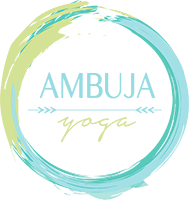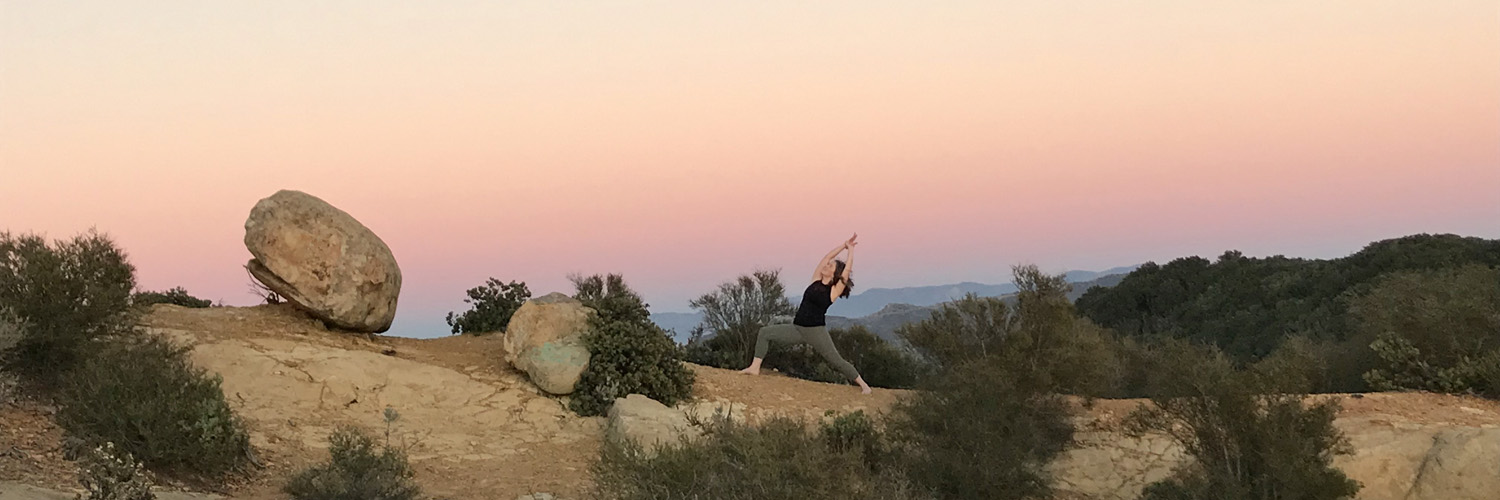For the entirety of my adult life, I’ve always felt the call to escape winter’s cold. The shorter, cold, wet/snowy days have never been my thing. I end up feeling foggy, heavy, lethargic, and unmotivated… which just snowballs into more of the same. So each year, I’ve packed up and headed south to Bali or Nicaragua or Mexico or Costa Rica or Thailand. The destination hasn’t always been important, but the heat and the warmth sure have. I’ve learned that if I take the time to listen to the wisdom of my body it will guide me back into balance. My body naturally wants to balance kapha dosha, even during kapha season. If you’re not sure what I’m talking about, hop on over to this blog post that talks about the basics of Ayurveda and dosha theory.
Now that we’re on the road, traveling in the RV we seem to be chasing warmer weather, much the same as I have always done, but at a slower pace. We’ve experienced all of nature’s beautiful fury… from giant storms on the Oregon Coast, to monsoon rains in the Redwoods, to snow in Joshua Tree. We’ve experienced her wonder and beauty too… seal pups playing in a calm cove in Florence, the majestic energy of the Redwoods, the first signs of spring in Santa Barbara, hiking on “new to me” trails to discover hidden gems, exploring new cities and visiting familiar ones, and the warmth of the sun on my skin.
This afternoon I’ll throw my yoga mat down in the dust and sand of Joshua Tree N.P. and flow with the sun on my skin and savor every moment.
This is the season of kapha dosha… from the darkness of winter to early spring, soon we’ll begin to transition into pitta and the heat of summer, but for now, we’ll work on balancing kapha dosha. I find this time of the season to be the hardest to navigate, but with the pitta season right around the corner, it’s also exciting. It’s time to shake off the weightiness of winter and invite my energy to return.
Kapha dosha is associated with the elements of earth and water. When it’s in balance, the kapha person is loving, loyal, stable and dependable, but when kapha is out of wack and excessive they can be prone to lethargy, weight gain, and dullness (I’m just going to go ahead and raise my hand here). In Ayurveda, they use opposite qualities to bring balance to the out of balance dosha. If you’re in a season of excess kapha, you would want to incorporate dynamic movement and light, dry, and warming foods and spices into your day.
This time of year, I naturally want to stay inside, eat soup, and cuddle under a giant pile of blankets because I crave the warmth. But as we know, kapha creates more kapha, and I need to move. This winter I took the plunge and signed up for classpass, so I could, gasp, go to CorePower and take a hot yoga class… don’t judge me! While there is no spiritual aspect to a CorePower class there is heat and it does get the blood flowing, which is exactly what I need this time of year. I can weave my meditation practice and spiritual practices into other parts of my day OR invite my yoga practice to be a moving meditation.
Your Guide to Navigating Kapha Season
If you’re also feeling bogged down by kapha, here are my favorite practices to shake off the excess. And if you’re not sure what your dosha is, I really like this dosha quiz from Banyan Botanicals.
1. MOVE YOUR BODY
Yes, you’ve got to move your body. More than you’re naturally inclined to this season. This is the season where we walk the fine line between restoration and rest and doing and building. Do a more strenuous activity… hot yoga or a dynamic vinyasa practice, hop on the stair climber at the gym, do that challenging hike you’ve been eye-balling, but you think is just a little too long/too hard, take up skiing or mountain biking, etc. Do something that gets your heart pumping and blood flowing to clear out stagnation. It will help lift the mental fog while keeping your energy levels up.
If you’re practicing yoga at home, or wondering what type of studio class to seek, a practice to balance kapha dosha would include dynamic movement, lots of standing poses, and perhaps some heating pranayama techniques like kapalabhati, ujjayi, or surya bhedana (solar breath). If you prefer a guided practice at home, check out this dynamic, energy building prana vayu class on my YouTube channel.

2. TAKE TIME TO SLOW DOWN
This is a natural season for slowing down and laying the foundation for the season ahead, so take this time to meditate, create, learn new skills, clear out clutter, and set yourself up for success. Because when you feel the shift in energy you’re going to want to do it all. But don’t let this time for slowing down take over your life. Just a few minutes a day is enough.

3. EAT WARMING SPICES
Think cinnamon, ginger, cardamom, cayenne, and cloves. Drink hot chai, golden mylk, and warm water with lemon and cayenne.
4. EAT WARM FOODS
If you’re feeling chilled, eat warm food that’s easy to digest like hot soups, sauteed or roasted veggies and stirfries. Avoid heavier foods, like dairy, nuts, and fats (it’s so hard to cut back on avocado). If your digestive fire is still going strong, and spring is near, feel free to start incorporating more raw veggies and salads in your diet.
5. GET OUTSIDE
This is tricky, especially if you’re like me and HATE being cold. I will do almost anything to avoid being cold! LOL. But when the sun is out, get your booty outside and get those sweet rays of Vitamin D on your skin. Feel the warmth of the sun on your cheeks… in moderation, of course, no sunburns! Enjoy a cup of coffee in the sunshine, go for a walk/hike, or take a few moments to stretch it out.

6. CAN’T TAKE THE COLD AND WET OF KAPHA SEASON? TRAVEL SOMEWHERE WARM
If you have the means, take a few days, a weekend, a week, or a month and go somewhere warm! Seriously, it doesn’t need to be anything fancy. Take a weekend in Santa Barbara, Palm Springs (there are tons of hot spring resorts here) or Sedona. Take a long weekend and go to Mexico. Have more time? Head further south… Nicaragua has amazing beaches, jungles, and islands… and it’s freakin cheap, same with Thailand. Just do it. You’re worth it. It will give you something to look forward to and will maybe even motivate you to keep moving your body throughout the winter.
7. SELF-CARE
There are so many ways that we can practice self-care and I know that the ones I’m about to mention aren’t that exciting, but they’re easy to include in your daily (or weekly) routine and have big results.
Give dry brushing a try… it helps improve circulation and you’re exfoliating your beautiful skin. It’s a win-win. You can find dry brushes at most health food stores. I’m on the road and I don’t have space for a dry brush, so I use a shower loofah that has a loofah scrubber on one side and the mesh side for soapy tasks… it works double duty for me. You can also find dry brushing gloves. Just a few minutes before you hop in the shower is enough.
I LOVE, LOVE, LOVE self-massage or abhyanga. Use a warming oil like sesame and set aside 15 minutes to give your body and nervous system a little TLC. Put an old towel down on the bathroom floor, strip down and give your entire body a massage. Use long strokes on your long bones and circles on your joints. This practice is super calming for the nervous system and such a beautiful way to practice self-love.
Kapha’s tend to be more mucus-y and prone to colds/congestion, so tongue scraping is another practice I recommend for kaphas and especially during this cooler kapha season. With tongue scraping, you’ll scrape off all that extra gunk that’s hanging out on your tongue. I use a copper one that I found for a steal on Amazon.
Wow, I know I just shared a lot of info here. If you want to learn more about Yoga and Ayurveda, check out my upcoming 300 hour yoga teacher training. You’ll learn how to incorporate Ayurvedic theory into your class planning for specific doshas, the different seasons, times of day and even seasons of life.

 Ambuja Yoga
Ambuja Yoga 



